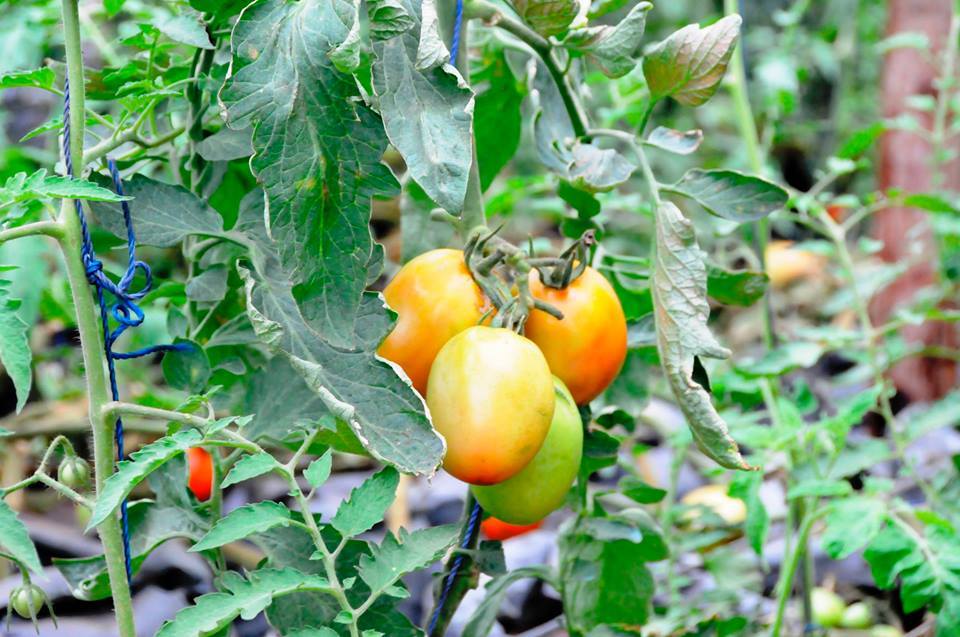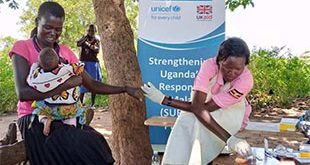
Insurance could unlock finance in agribusiness; boost farmer’s productivity and incomes
Kampala, Uganda | ISAAC KHISA | Christopher Elema, 40, a maize farmer in Kiryandongo District, located 225kms, north-west of Kampala, was in February this year paid Shs6.5million as compensation for his failed crop yields.
He had planted 40 acres of maize using a Shs15million loan he obtained from Stanbic Bank with the help of the agriculture insurance policy.
“I took up an agriculture insurance policy whose premium was 4% the value of the loan (approximately Shs600, 000),” he told The Independent in an interview.
Elema says he planted maize for the second season of 2018 that usually starts in August until December but the crop was hit by drought leading to poor yields.
“As a result, I approached the agro-consortium for compensation, which they did upon carrying out farm verification and assessment,” he said.
In Kibira Village in Nakaseke district in central Uganda, Alice Nanyonga, 37, was compensated Shs2.45million for her failed one-acre beans farm.
Nanyonga says she had planted the crop during the first season of the year that runs from March to July but was hit by drought during the flowering period. She had paid only Shs80, 000 as premium for the insurance cover.
Similarly, Faith Nanyonga, 43, who had planted beans on a half-acre-piece of land in Kyagala Village in Wakiso district, was compensated Shs400, 000 after she suffered a similar fate.
“I wish many people could enrol for the agriculture insurance products,” she says adding, “I did not expect to be paid all that much.”
These revelations are at the heart of the annual agriculture insurance performance report that shows that the Agriculture Insurance Consortium (AIC) that consists of 10 insurers, paid farmers Shs2bn (with Poultry accounting for over 67.3%) in 2018 as compensation for the losses they incurred compared to Shs1.9bn (with multi-peril crop insurance accounting for 84%) in 2017, according to the latest data from the Insurance Regulatory Authority of Uganda.
This compensation, however, is too low compared to the insurance industry’s Shs326.7bn paid out as claims in 2018.
The gross underwritten premiums for the agriculture insurance policies increased from Shs5.2bn in 2017 to Shs5.24bn in 2018. This was against the sum insured of Shs235.7bn in 2017 and Shs387bn in 2018.
The central region accounted for 39% of the total premiums paid during the year while western region accounted for 38%. The northern and eastern regions accounted for 11% and 12% respectively.
The farmers that embraced agriculture insurance increased from merely 5,000 in the Financial Year 2015/16 to 100,000 for the Financial Year 2018/19, signalling increasing confidence in the country’s insurance industry.
The country’s insurance penetration – all the money spent on buying insurance remained at equivalent to less than 1% of the economy.
At this level, it is the lowest in the East African region. Kenya’s insurance penetration stands at 3.4%, Tanzania, 2.3% in Tanzania, and Rwanda 1%. The average penetration for Africa is 6%.
Ibrahim Kaddunabbi Lubega, the Chief Executive Officer at the IRA says the uptake of agriculture insurance has improved since it was unveiled but a lot is still required to grow the figure.
The government, through the Ministry of Finance, Planning and Economic Development, unveiled an Agriculture Insurance Scheme in 2016 to cushion farmers from risks associated with losses arising from natural disasters as well as attract financing to the agriculture sector.
The scheme also intends to encourage commercial banks to lend to the agriculture sector given that the risk associated with sector is mitigated through appropriate insurance cover.
The government allocates Shs5bn annually to the scheme as premium subsidies to farmers who either directly purchase an agricultural insurance product or access credit through a financial institution.
The scheme operates in such a way that small scale farmers, with less than five acres or seasonal income of Shs20million, are granted a 50% insurance subsidy whereas large scale farmers with five acres or more or seasonal income of Shs20million or more, are granted a 30% insurance subsidy.
On the other hand, farmers who operate in high risk areas – prone to regular catastrophic risks such as landslides, excessive rains and prolonged droughts – are granted an 80% subsidy.
The scheme targets both small scale and large holder farmers engaged in commercial farming and cover crops including coffee, maize, beans, rice, cotton, bananas, oil seeds – sunflower, simsim, soybean, and groundnuts, fruit trees, tea, sorghum, barley, Irish potatoes and livestock, poultry, pigs and fish.
The scheme is operated on the basis of a Public Private Partnership (PPP) between the government and the Uganda Insurers Association, the umbrella body of insurance and reinsurance companies licensed to operate in Uganda which was appointed to administer and implement the national scheme.
This comes at the time the global insurance market for agricultural risks is currently thought to be worth about US$33 billion, and is growing at a rate of about 5% each year, according to the latest AXA XL Reinsurance agricultural Survey. Most of this growth – some 80% – is coming from emerging markets, such as India, China and Brazil.
In the Sub-Saharan Africa, only a few countries including Mauritius, Nigeria, South Africa, and Sudan, are known to provide agricultural insurance.
The survey notes that in many countries, particularly emerging markets, crop insurance premiums are often subsidised by governments, as without their support, many farmers simply wouldn’t be able to pay premium rates of about 10% for multi-peril crop insurance.
 The Independent Uganda: You get the Truth we Pay the Price
The Independent Uganda: You get the Truth we Pay the Price




Insurance is a big deal, especially when it concerns agriculture. Most farmers are not enrolled on an insurance scheme becuase they don’t have much awareness. It is important for farmers because they would then be able to venture into high risk areas of agriculture which is an off area for many. For more info on how to get insured, click here